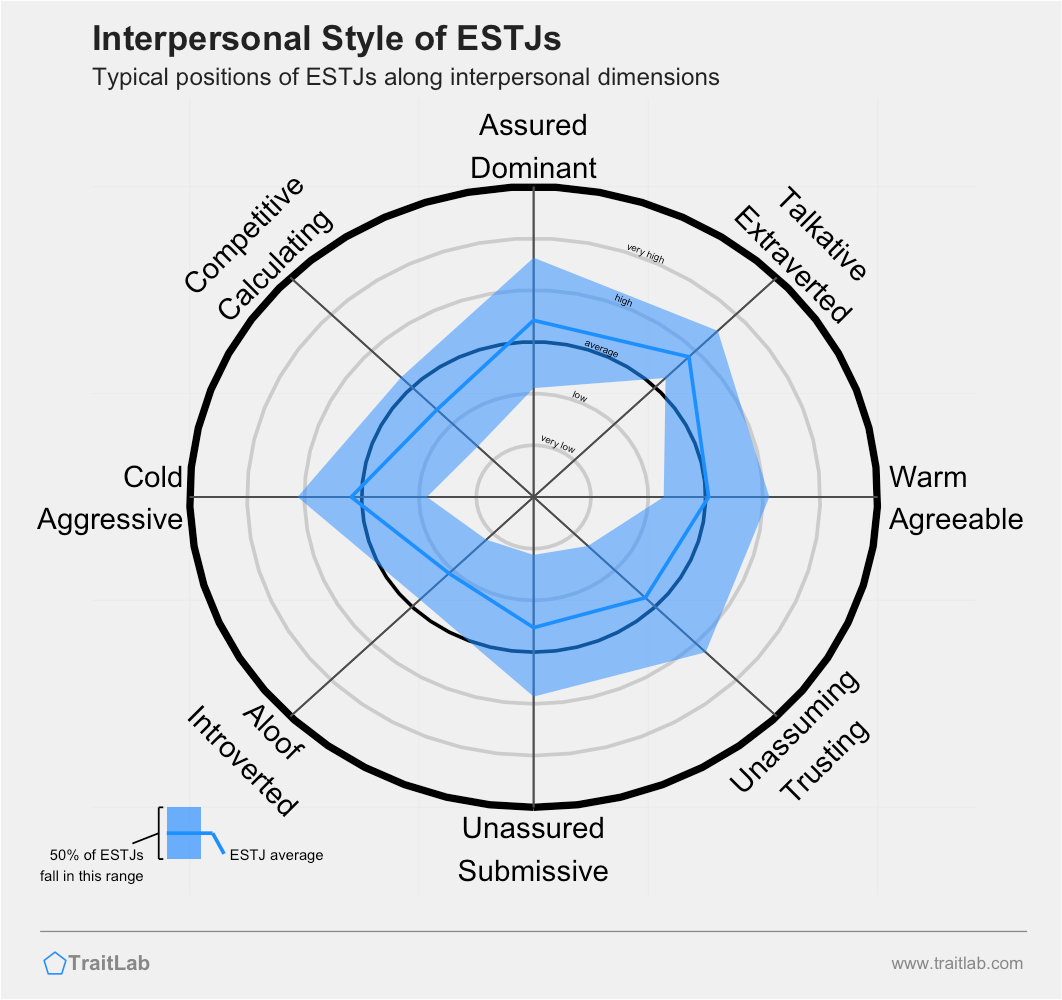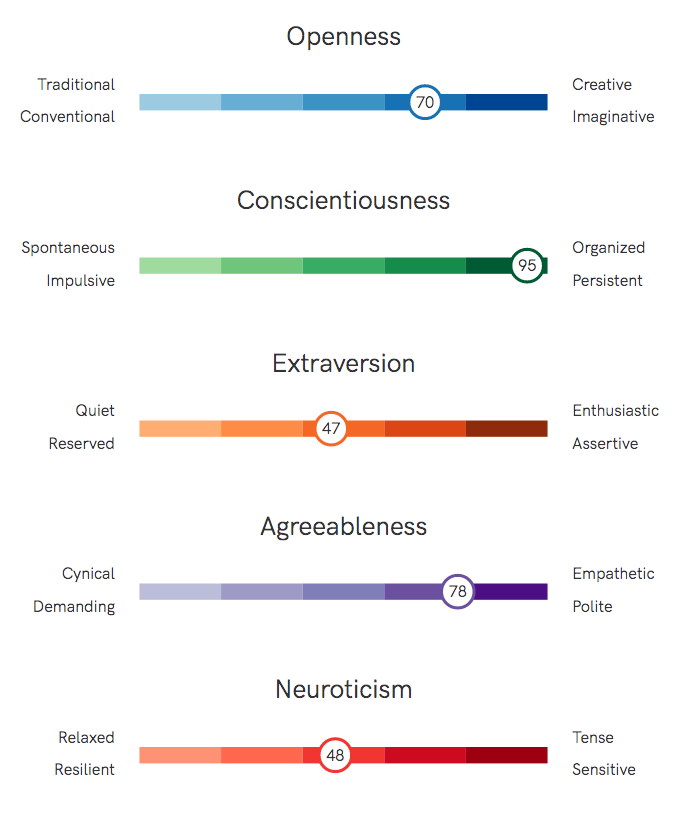Most ESTJs share a common interpersonal style and set of challenges.
Reading time: 5 minutes

Gregory Park, Ph.D.
Author
Most ESTJs share a similar interpersonal style, and this style impacts most of their relationships, including those with friends, families, work colleagues, and romantic partners.
For comparisons between ESTJs and other types, jump straight to these personality type comparisons.
Your interpersonal style describes your social tendencies in terms of dominance, submissiveness, warmth, and coldness. This style impacts how you interact with others, and in turn, it can affect how they act around you.
The circular graph below shows the average interpersonal style of ESTJs. The vertical, up-down axis shows their style in terms of dominance, with a highly assertive style at the top (Assured-Dominant) and a highly passive style at the bottom (Unassured-Submissive).
The horizontal, left-right axis shows their style in terms of warmth, with a cold and impersonal style on the left (Cold-Aggressive) and a friendly, empathetic manner on the right (Warm-Agreeable).

The shaded blue area shows the typical interpersonal style of ESTJs across eight dimensions. Notice the areas where the blue area extends closer to the outer edges of the circle. These are the aspects that most heavily influence ESTJs’ interactions.
As a group, ESTJs are unusually balanced in their interpersonal style. Notice that the blue area is closely aligned with the middle circle. There are no dimensions in which ESTJs are extraordinarily high or low.
One interpretation of this balance is that ESTJs often appear as socially well-adjusted. In terms of their interpersonal warmth, they can compromise and show affection when appropriate, but they can also push back and make demands when necessary. In their social dominance, they will happily lead others and take charge when given the opportunity, but they are capable of stepping back and following if needed.

Ready to see yourself clearly?
See an incredibly detailed analysis of your unique traits, strengths, and interests
There are two dimensions on which ESTJs are slightly, but not significantly, above average. Some individual ESTJs may be even more extreme in these two dimensions:
For comparisons between ESTJs and other types from the 16 Personality typology, visit any of the type pairings below: